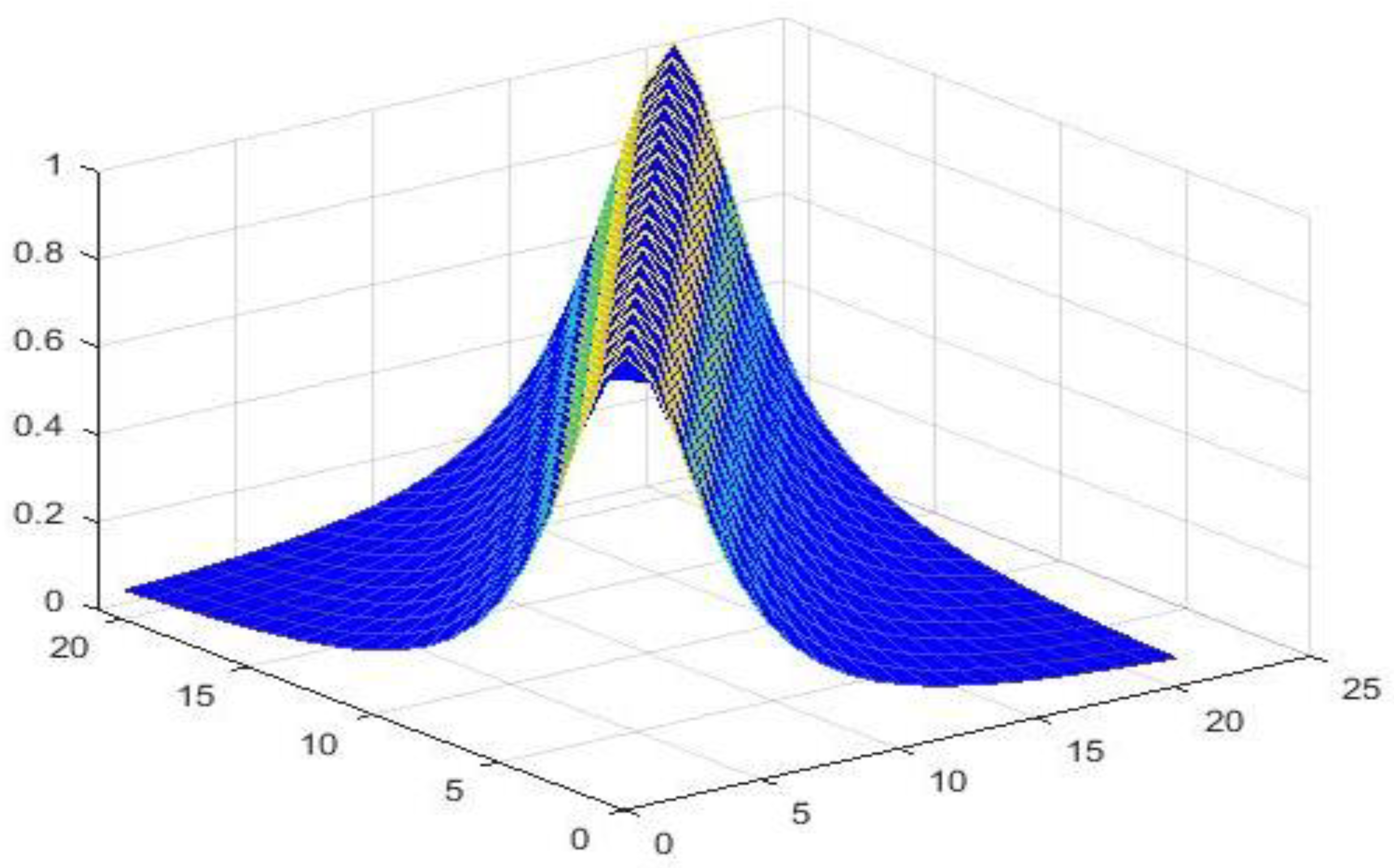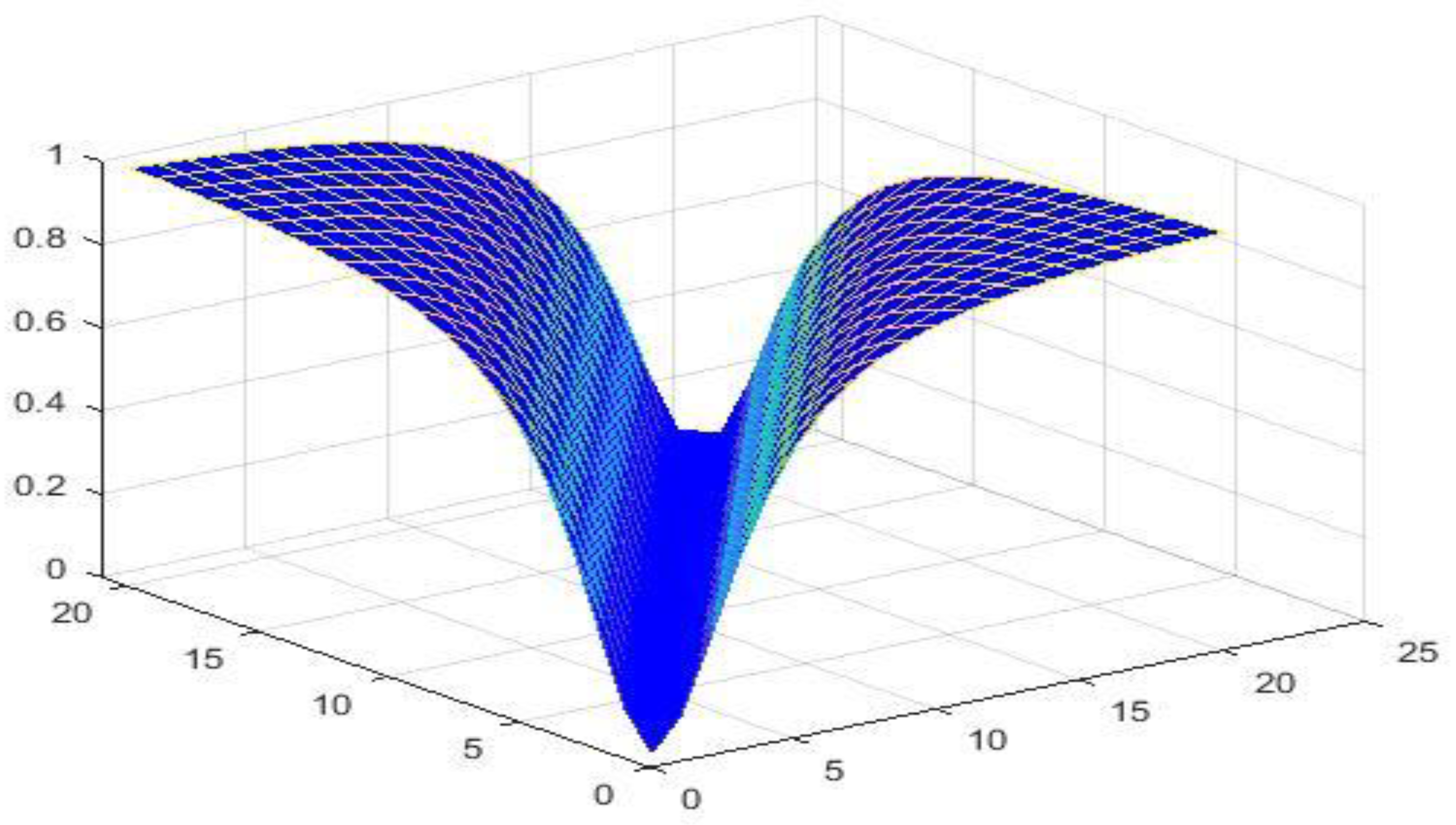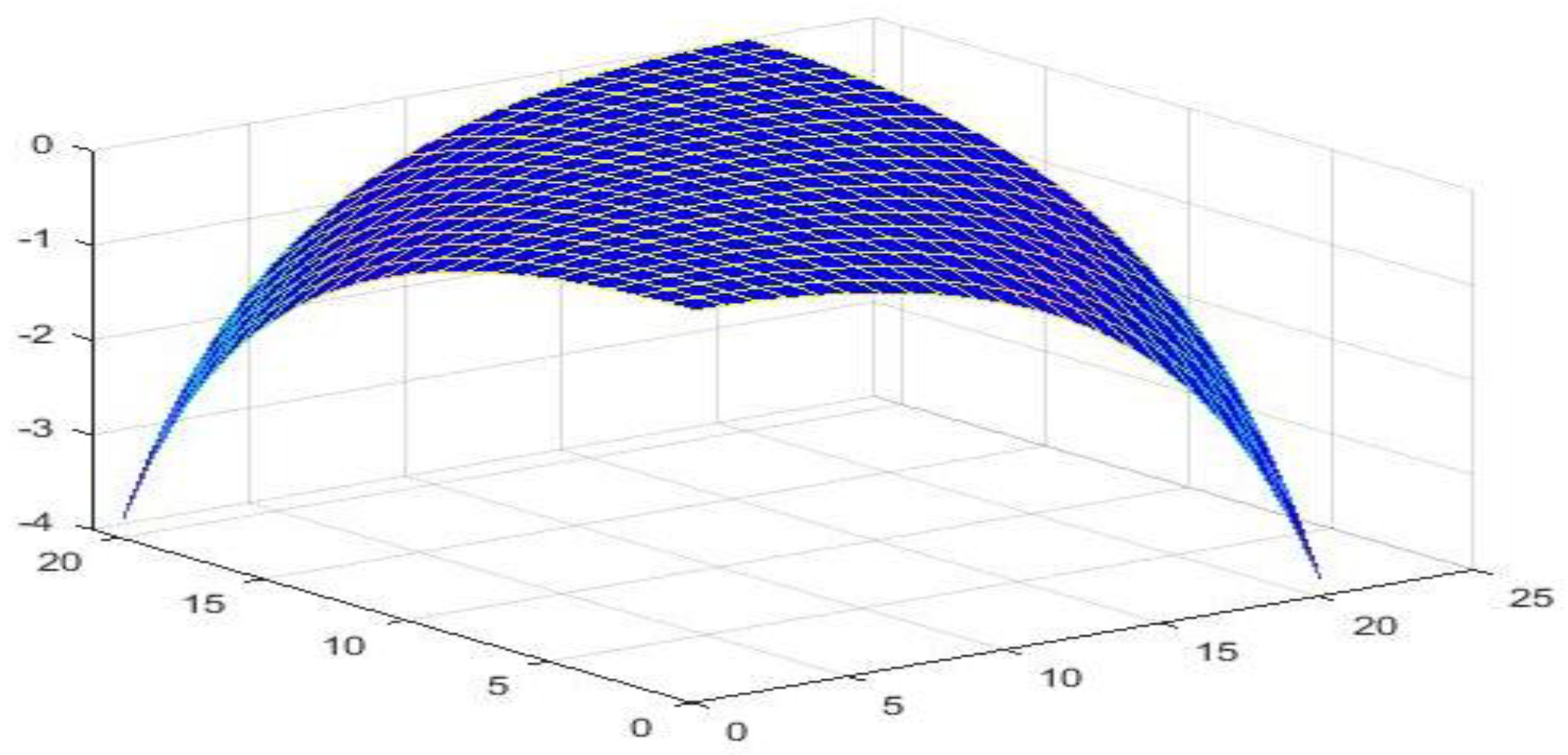On Intuitionistic Fuzzy Nb Metric Space and Related Fixed Point Results with Application to Nonlinear Fractional Differential Equations
Abstract
:1. Introduction
2. Preliminaries
- (i)
- (ii)
- (iii)
- is continuous;
- (iv)
- for
- (i)
- (ii)
- (iii)
- is continuous;
- (iv)
- for
- (a)
- (b)
- (c)
- if and only if
- (d)
- (e)
- is a continuous function.
- (S1)
- if and only if
- (S2)
- (i)
- (ii)
- (iii)
- if and only if
- (iv)
- (v)
- is a continuous function,
- (vi)
- (vii)
- if and only if
- (viii)
- (ix)
- is a continuous function.
3. Intuitionistic Fuzzy Metric Space
- (x)
- (xi)
- (xii)
- if and only if
- (xiii)
- (xiv)
- is a continuous function,
- (xv)
- (xvi)
- if and only if
- (xvii)
- (xviii)
- is a continuous function.
4. Generalized Definitions
- (a)
- (b)
- (c)
- if and only if where is permutation,
- (d)
- (e)
- is a continuous function,
- (f)
- (g)
- if and only if where is permutation,
- (h)
- (i)
- is a continuous function.
- (I)
- (II)
- (III)
- if
- (IV)
- (V)
- is a continuous function,
- (VI)
- (VII)
- if
- (VIII)
- (IX)
- is a continuous function.
- (a)
- (b)
- (c)
- if and only if where is permutation,
- (d)
- (e)
- is a continuous function,
- (f)
- (g)
- if and only if where is permutation,
- (h)
- (i)
- is a continuous function.
- (i)
- (ii)
- (iii)
- if
- (iv)
- (v)
- is a continuous function,
- (vi)
- (vii)
- if
- (viii)
- (ix)
- is a continuous function.
5. Application in Fixed Point Theory
6. Application to Integral Equations
- (a)
- For all and
- (b)
- For all
7. Application to Linear Equations
8. Application to Nonlinear Fractional Differential Equation
- i
- is a continuous function,
- ii
- is continuous,
9. Conclusions
Author Contributions
Funding
Data Availability Statement
Conflicts of Interest
References
- Gähler, S. 2-metrische Räume und ihre topologische Struktur. Math. Nachr. 1963, 26, 115–148. [Google Scholar] [CrossRef]
- Dhage, B.C. Generalized metric space and mapping with fixed point. Bull. Cal. Math. Soc. 1992, 84, 329–336. [Google Scholar]
- Mustafa, Z.; Sims, B. A new approach to generalized metric spaces. J. Nonlinear Convex Anal. 2006, 7, 289. [Google Scholar]
- Jleli, M.; Samet, B. Remarks on G-metric spaces and fixed point theorems. Fixed Point Theory Appl. 2012, 2012, 210. [Google Scholar] [CrossRef] [Green Version]
- Sedghi, S.; Shobe, N.; Aliouche, A. A generalization of fixed point theorems in S-metric spaces. Mat. Vesn. 2012, 64, 258–266. [Google Scholar]
- Bakhtin, I.A. The contraction principle in quasi metric spaces, Funct. Anal. Unianowsk Gos. Ped. Inst. 1989, 30, 26–37. [Google Scholar]
- Sedghi, S.; Shobkolaei, N.; Shahraki, M.; Došenović, T. Common fixed point of four maps in S-metric spaces. Math. Sci. 2018, 12, 137–143. [Google Scholar] [CrossRef] [Green Version]
- Zadeh, L. Fuzzy sets. Inf. Control 1965, 8, 338–353. [Google Scholar] [CrossRef] [Green Version]
- Heilpern, S. Fuzzy mappings and fixed point theorem. J. Math. Anal. Appl. 1981, 83, 566–569. [Google Scholar] [CrossRef] [Green Version]
- Kaleva, O.; Seikkala, S. On fuzzy metric spaces. Fuzzy Sets Syst. 1984, 12, 215–229. [Google Scholar] [CrossRef]
- Kramosil, I.; Michálek, J. Fuzzy metrics and statistical metric spaces. Kybernetika 1975, 11, 336–344. [Google Scholar]
- George, A.; Veeramani, P. On some results in fuzzy metric spaces. Fuzzy Sets Syst. 1994, 64, 395–399. [Google Scholar] [CrossRef] [Green Version]
- Nădăban, S. Fuzzy b-metric spaces. Int. J. Comput. Commun. Control 2016, 11, 273–281. [Google Scholar] [CrossRef] [Green Version]
- Malviya, N. The N-fuzzy metric spaces and mappings with application. Fasc. Math 2015, 55, 133–151. [Google Scholar] [CrossRef]
- Fernandez, J.; Isık, H.; Malviya, N.; Jarad, F. Nb-fuzzy metric spaces with topological properties and applications. AIMS Math. 2023, 8, 5879–5898. [Google Scholar] [CrossRef]
- Park, J.H. Intuitionistic fuzzy metric spaces. Chaos Solitons Fractals 2004, 22, 1039–1046. [Google Scholar] [CrossRef]
- Turkoglu, D.; Alaca, C.; Cho, Y.J.; Yildiz, C. Common fixed point theorems in intuitionistic fuzzy metric spaces. J. Appl. Math. Comput. 2006, 22, 411–424. [Google Scholar] [CrossRef]
- Kanwal, S.; Azam, A.; Shami, F.A. On coincidence theorem in intuitionistic fuzzy b-metric spaces with application. J. Funct. Spaces 2022, 2022, 5616824. [Google Scholar] [CrossRef]
- Hussain, A.; Al Sulami, H.; Ishtiaq, U. Some new aspects in the intuitionistic fuzzy and neutrosophic fixed point theory. J. Funct. Spaces 2022, 2022, 3138740. [Google Scholar] [CrossRef]
- Ishtiaq, U.; Saleem, N.; Uddin, F.; Sessa, S.; Ahmad, K.; di Martino, F. Graphical Views of Intuitionistic Fuzzy Double-Controlled Metric-Like Spaces and Certain Fixed-Point Results with Application. Symmetry 2022, 14, 2364. [Google Scholar] [CrossRef]
- Farheen, M.; Ahmed, K.; Javed, K.; Parvaneh, V.; Din, F.U.; Ishtiaq, U. Intuitionistic Fuzzy Double Controlled Metric Spaces and Related Results. Secur. Commun. Netw. 2022, 2022, 6254055. [Google Scholar] [CrossRef]
- Schweizer, B.; Sklar, A. Statistical metric spaces. Pac. J. Math 1960, 10, 313–334. [Google Scholar] [CrossRef] [Green Version]
- Ionescu, C.; Rezapour, S.; Samei, M.E. Fixed points of some new contractions on intuitionistic fuzzy metric spaces. Fixed Point Theory Appl. 2013, 2013, 168. [Google Scholar] [CrossRef] [Green Version]
- Mehmood, F.; Ali, R.; Ionescu, C.; Kamran, T. Extended fuzzy b-metric spaces. J. Math. Anal. 2017, 8, 124–131. [Google Scholar]




Disclaimer/Publisher’s Note: The statements, opinions and data contained in all publications are solely those of the individual author(s) and contributor(s) and not of MDPI and/or the editor(s). MDPI and/or the editor(s) disclaim responsibility for any injury to people or property resulting from any ideas, methods, instructions or products referred to in the content. |
© 2023 by the authors. Licensee MDPI, Basel, Switzerland. This article is an open access article distributed under the terms and conditions of the Creative Commons Attribution (CC BY) license (https://creativecommons.org/licenses/by/4.0/).
Share and Cite
Ishtiaq, U.; Kattan, D.A.; Ahmad, K.; Lazăr, T.A.; Lazăr, V.L.; Guran, L. On Intuitionistic Fuzzy Nb Metric Space and Related Fixed Point Results with Application to Nonlinear Fractional Differential Equations. Fractal Fract. 2023, 7, 529. https://doi.org/10.3390/fractalfract7070529
Ishtiaq U, Kattan DA, Ahmad K, Lazăr TA, Lazăr VL, Guran L. On Intuitionistic Fuzzy Nb Metric Space and Related Fixed Point Results with Application to Nonlinear Fractional Differential Equations. Fractal and Fractional. 2023; 7(7):529. https://doi.org/10.3390/fractalfract7070529
Chicago/Turabian StyleIshtiaq, Umar, Doha A. Kattan, Khaleel Ahmad, Tania A. Lazăr, Vasile L. Lazăr, and Liliana Guran. 2023. "On Intuitionistic Fuzzy Nb Metric Space and Related Fixed Point Results with Application to Nonlinear Fractional Differential Equations" Fractal and Fractional 7, no. 7: 529. https://doi.org/10.3390/fractalfract7070529
APA StyleIshtiaq, U., Kattan, D. A., Ahmad, K., Lazăr, T. A., Lazăr, V. L., & Guran, L. (2023). On Intuitionistic Fuzzy Nb Metric Space and Related Fixed Point Results with Application to Nonlinear Fractional Differential Equations. Fractal and Fractional, 7(7), 529. https://doi.org/10.3390/fractalfract7070529






